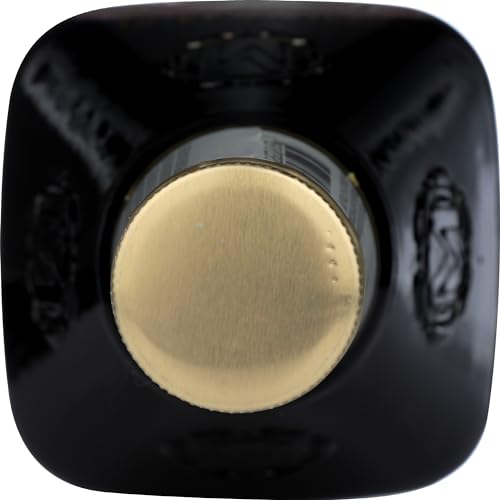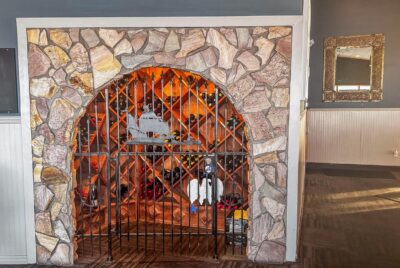Concord Wine: A Sweet American Classic
Post Disclaimer
*We may earn a commission for purchases made using our links. Please see our disclosure to learn more.
The first time I tasted Concord wine, its bold sweetness and rich grape aroma took me right back to childhood—grape juice, PB&J sandwiches, and all. There’s something unmistakably American about this wine, made from the native Concord grape that thrives in the Northeast. Some may call it too sweet or simple, but it has a rich history and a devoted following that make it special in its own right.
Over the years, as I’ve explored different wines and regions, I’ve gained a real appreciation for this often-overlooked varietal. It’s a true American original in a world so often dominated by European traditions. Whether you’re a wine lover or just curious about American food culture, Concord wine is worth discovering.
Key Takeaways
- Concord wine is produced from the native American Concord grape (Vitis labrusca), first developed in Concord, Massachusetts in 1849.
- Known for its sweet profile with distinctive “foxy” aromas, intense grape flavor, and deep purple color.
- These wines typically contain 10-12% alcohol by volume and higher residual sugar than traditional wines.
- Concord wine has significant historical and cultural importance in American wine traditions.
- Best served slightly chilled (around 55°F/13°C) and consumed within 1-2 years of purchase.
- Pairs exceptionally well with chocolate desserts, strong cheeses, and spicy foods.
Concord Wine Recommendation
Manischewitz Concord Kosher Wine
Manischewitz Concord Kosher Wine is a classic, sweet red wine known for its bold grape flavor and smooth finish. Made from Concord grapes, it offers a rich, fruity taste with hints of confectionery sweetness. This versatile wine pairs well with barbecued meats and fruity desserts and can be enjoyed chilled for a refreshing experience. Crafted under strict kosher guidelines, it remains a favorite for holidays, celebrations, and everyday enjoyment.
- Rich Flavor: Smooth, sweet, and fruity with a bold grape taste.
- Versatile Pairing: Complements barbecued meats and fruity desserts.
- Kosher Certified: Ideal for traditional celebrations and dietary needs.
- Very Sweet: May not appeal to those who prefer dry wines.
- Lower Complexity: Lacks the depth of more robust red wines.
- Vintage Variability: Flavor profile may change slightly each year.
Why I Love It: Manischewitz Concord Kosher Wine is a nostalgic favorite with its bold, sweet grape flavor and smooth finish. It has a rich, fruity taste that reminds me of classic grape juice but with a more refined, grown-up twist. Unlike drier reds, this wine is effortlessly drinkable and pairs beautifully with barbecue or fruit-based desserts. Plus, its kosher certification makes it a staple for holiday gatherings and special occasions.
Best For: Fans of sweet, fruity wines, those looking for a classic kosher option, and anyone who enjoys a smooth, easy-to-drink red with a nostalgic touch.
Price Point: Typically around $8–$9 for a 750ml bottle, making it an affordable and accessible choice for casual sipping or festive celebrations.
The History of Concord Wine
The story of Concord wine begins in 1849 in the town of Concord, Massachusetts, where Ephraim Wales Bull developed the Concord grape after years of selective breeding. Bull sought to create a grape variety that could withstand New England’s harsh climate while producing consistent, flavorful fruit.
This innovation came at a crucial time in American history. European grape varieties (Vitis vinifera) struggled in North American conditions, falling victim to phylloxera and fungal diseases. The Concord grape, with its natural resistance to these challenges, offered American viticulture a path forward.
The grape’s popularity spread rapidly throughout the Northeast and Great Lakes regions, becoming the foundation for an indigenous American wine industry. By the late 19th century, Concord grapes were being cultivated commercially for both wine and juice production.
Ironically, Prohibition (1920-1933) actually boosted Concord grape cultivation. While alcoholic wine was banned, grape juice production wasn’t. Concord grape growers cleverly sold grape juice concentrates with thinly veiled instructions that effectively taught customers how to ferment them into wine at home.
The Distinctive Character of Concord Wine
What sets Concord wine apart is its intensely grape-forward profile—unmistakably different from European wine varieties. Wine experts describe Concord wine as having a “foxy” aroma and flavor, referring to the wild, musky character unique to native American grapes.
This distinctive character comes from the Concord grape’s botanical classification as Vitis labrusca, different from the Vitis vinifera species used for most familiar wines. The key compound responsible for Concord’s signature aroma is methyl anthranilate, which creates that characteristic “grape juice” smell that’s immediately recognizable.
When you taste Concord wine, expect:
- Deep purple, almost ink-like color
- Sweet, jammy flavor profile
- Low tannins and moderate acidity
- That distinctive “foxy” or musky aroma
- Notes reminiscent of blackberry, plum, and violets
The best Concord wines achieve a balance between natural sweetness and sufficient acidity, preventing them from becoming cloying while preserving their fruity essence.
Production Methods of Concord Wine
Concord wine production follows a unique process that sets it apart from traditional winemaking. During my visit to producers in New York’s Finger Lakes region, I observed several key differences in how this distinctively American wine is crafted.
Unlike conventional red wines, which rely on extended skin contact during fermentation to develop color and tannins, Concord grapes naturally possess deep color and bold flavor. This allows for a shorter maceration period while still achieving the signature rich hue and fruity character.
Typical Production Process:
- Harvesting: Fully ripened Concord grapes are picked in late September to October when they reach peak sweetness.
- Crushing and Destemming: The grapes are gently crushed to release their juice, while stems are removed to prevent bitterness.
- Brief Maceration: Unlike European varieties, Concord grapes require only a short period of skin contact since they already have intense color and flavor.
- Pressing: The juice is separated from the skins and seeds, preserving the fruit-forward taste.
- Fermentation: Yeast is added to convert sugars into alcohol. Many winemakers halt fermentation early to retain natural sweetness.
- Filtration and Stabilization: The wine is clarified to remove solids and ensure consistency.
- Bottling: Concord wine is typically bottled young, without oak aging, to maintain its fresh, fruity profile.
In cooler growing regions, where grapes may not develop enough natural sugar, winemakers often use chaptalization, the process of adding sugar during fermentation, to enhance alcohol content while preserving sweetness. This technique ensures a balanced and enjoyable final product.
Innovation in Concord Winemaking
While traditional Concord wine is known for its signature sweetness, innovative winemakers are experimenting with new techniques to create drier, more complex versions. Some producers are using extended fermentation, blending with other grape varieties, or even aging in oak barrels to introduce additional depth and structure. These modern approaches are expanding the appeal of Concord wine beyond its classic sweet style, attracting a broader range of wine enthusiasts.re increasingly experimenting with different styles, including drier versions and oak-aged varieties that add complexity to the traditional sweet profile.
Cultural Significance
Concord grapes have permeated American culture beyond wine. From Welch’s grape juice (first produced in 1869) to grape jelly on peanut butter sandwiches, the flavor is embedded in American food traditions.
Concord wine holds special significance in certain religious practices. Kosher Concord wines like Manischewitz have been central to Jewish ceremonies for generations, particularly during Passover. This connection has helped preserve Concord wine production even as mainstream wine preferences have shifted toward drier styles.
The economic importance of Concord grapes to rural communities shouldn’t be underestimated. In regions like western New York, Pennsylvania, Michigan, and Washington state, Concord grape cultivation supports local economies through both wine and juice production. Annual grape festivals in these regions celebrate this agricultural heritage and attract thousands of visitors.
Food Pairings
Concord wine’s sweet, intensely fruity character creates interesting food pairing opportunities. Through experimentation, I’ve found these wines work best when:
- Matched with chocolate desserts, particularly dark chocolate
- Paired with spicy cuisines where sweetness balances heat (Thai, Szechuan)
- Served alongside strong, pungent cheeses like blue cheese or aged cheddar
- Complementing nutty desserts like pecan pie or almond cake
- Accompanying rich, gamey meats like duck or venison
Concord wine makes a surprisingly appropriate pairing for traditional Thanksgiving dinner—its American heritage and fruity profile complement turkey and cranberry sauce beautifully.
For an easy but impressive dessert pairing, serve chilled Concord wine with artisanal dark chocolate and fresh berries. The wine’s grape essence enhances the fruit while creating an interesting contrast with the bittersweet chocolate.
Modern Trends in Concord Wine
Despite its reputation as a simple sweet wine, innovative winemakers are bringing new approaches to Concord wine production. Several craft wineries in the Northeast are now producing premium Concord wines that challenge preconceptions about this varietal.
These modern approaches include:
- Creating dry-style Concord wines with minimal residual sugar
- Experimenting with oak aging to add complexity and structure
- Producing premium small-batch releases with careful vineyard management
- Crafting Concord ice wines by harvesting frozen grapes for concentrated flavor
- Blending Concord with other varietals to create more complex profiles
Some producers are embracing organic and biodynamic growing methods, finding that these practices enhance the natural character of the Concord grape while producing wines with more nuanced flavors.
This experimentation represents a maturation of the Concord wine category, with producers treating the grape with the same respect given to traditional European varietals.
Storing and Serving
Most Concord wines are intended for early consumption rather than long-term aging. Their appeal lies in fresh, vibrant fruit flavors that tend to diminish with time. For optimal enjoyment:
- Consume within 1-2 years of purchase
- Store bottles away from light and heat in a cool, dark place
- Serve slightly chilled at approximately 55°F (13°C)—cooler than room temperature but not as cold as white wine
- Use standard red wine glasses that allow the distinctive aroma to develop
This serving temperature helps mute some of the overwhelming sweetness while preserving the wine’s fruit-forward character. Since these wines aren’t typically aged, sophisticated wine cellars aren’t necessary for proper storage.
Health Aspects
Like most red wines, Concord wine contains antioxidants including resveratrol and flavonoids. Studies on Concord grapes have shown potential cardiovascular benefits, including improved blood flow and reduced blood pressure.
However, these potential benefits should be weighed against Concord wine’s typically higher sugar content. Concord grape juice offers many of the same antioxidant benefits without alcohol for those concerned about either alcohol or sugar intake.
As with all alcoholic beverages, moderation is key. The distinctive compounds in Concord grapes appear in both the wine and juice, meaning health-conscious consumers can enjoy the potential benefits in either form.
Regional Producers
While Concord grapes grow throughout the northeastern United States, certain regions have developed particularly strong reputations for quality Concord wine:
- The Finger Lakes region of New York, with its long history of grape cultivation
- The Lake Erie “Grape Belt” spanning Pennsylvania, Ohio, and New York
- Parts of Michigan, particularly along the eastern shore of Lake Michigan
- The original growing region around Concord, Massachusetts
- Pockets of Washington state, particularly for juice production
Small, craft wineries in these regions often produce more sophisticated Concord wines than mass-market brands, paying careful attention to vineyard management and production techniques.
Conclusion
Throughout my wine journey, I’ve come to appreciate Concord wine not as a lesser alternative to European varietals, but as a unique American expression worthy of consideration on its own terms. Its sweet, bold character and distinctive aroma offer an authentic taste experience unlike any other wine.
While it may never achieve the prestige of fine Bordeaux or Burgundy, Concord wine represents an important piece of American viticultural heritage. Its accessibility and straightforward fruity profile make it an excellent entry point for new wine drinkers, while its historical significance offers depth for those interested in American wine traditions.
I encourage wine enthusiasts of all levels to approach Concord wine with an open mind, appreciating it for what it is—a genuine American original that continues to evolve while maintaining its distinctive character.
Frequently Asked Questions
1. Is Concord wine always sweet?
While most commercial Concord wines are sweet, some producers are now making semi-sweet and even dry versions. The grape’s natural intensity means that even drier styles retain their distinctive “grape-y” character, but the majority of Concord wines still contain significant residual sugar.
2. Can Concord wine be considered “fine wine”?
This depends entirely on how we define “fine wine.” By traditional European standards focusing on complexity and aging potential, Concord wines rarely qualify. However, well-made Concord wines honestly express their varietal character and regional terroir, qualities valued in fine wine. Judge Concord wine by standards appropriate to its character rather than comparing it to completely different wine traditions.
3. Why does Concord wine taste so different from other red wines?
Concord wine’s distinctive character comes from its grape species, Vitis labrusca, which is botanically different from the Vitis vinifera species used for most familiar wines. Concord grapes contain unique compounds, particularly methyl anthranilate, that create their characteristic “foxy” aroma and intense grape flavor.
4. Is Concord wine healthy?
Like most red wines, Concord wine contains antioxidants including resveratrol and flavonoids. However, its typically higher sugar content means potential health benefits should be weighed against sugar intake concerns. Concord grape juice offers many of the same antioxidant benefits without alcohol.
5. How long can I keep a bottle of Concord wine?
Most Concord wines are best consumed within 1-2 years of purchase. Unlike many premium European wines, Concord wines generally don’t benefit from extended aging and are produced to be enjoyed while fresh and vibrant.







